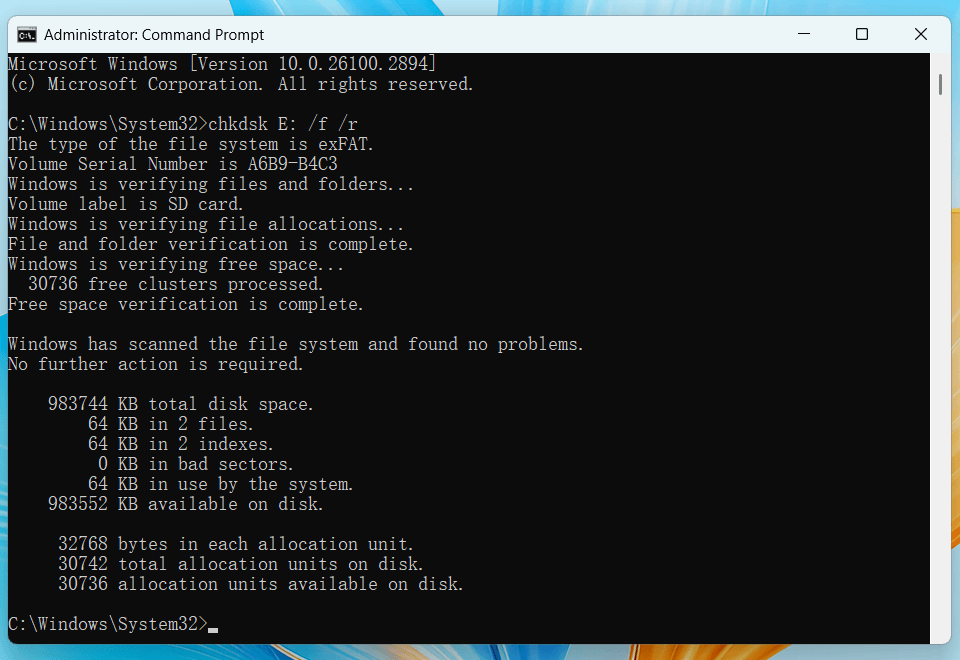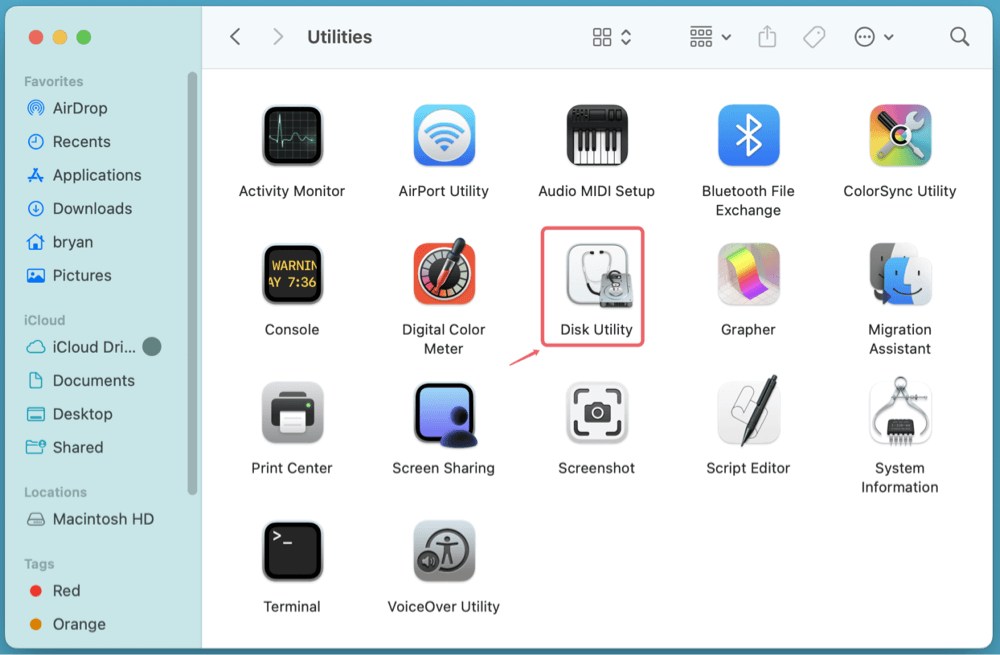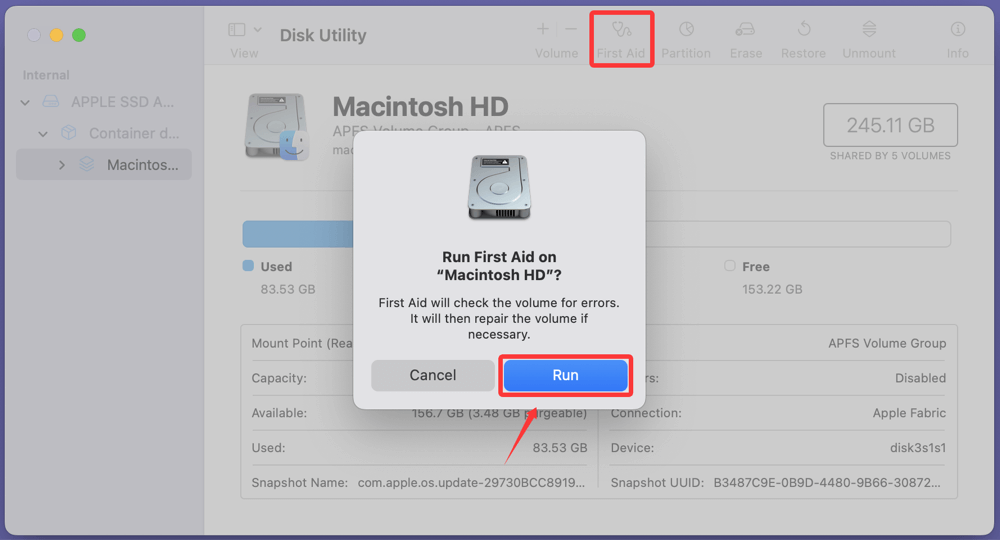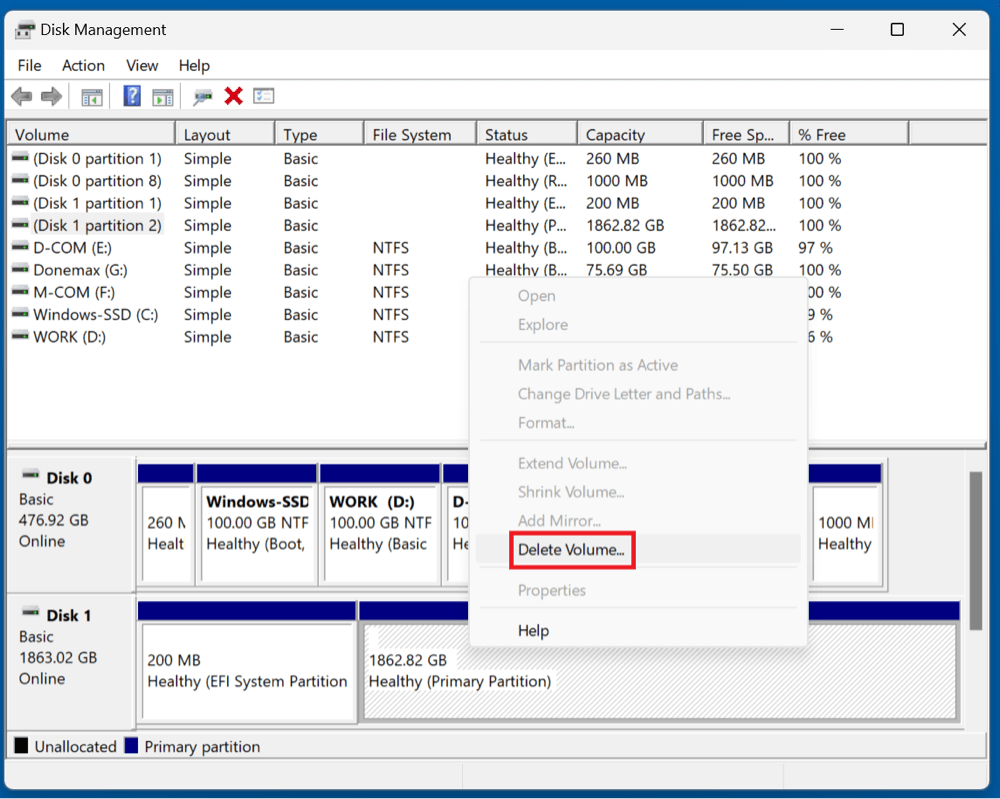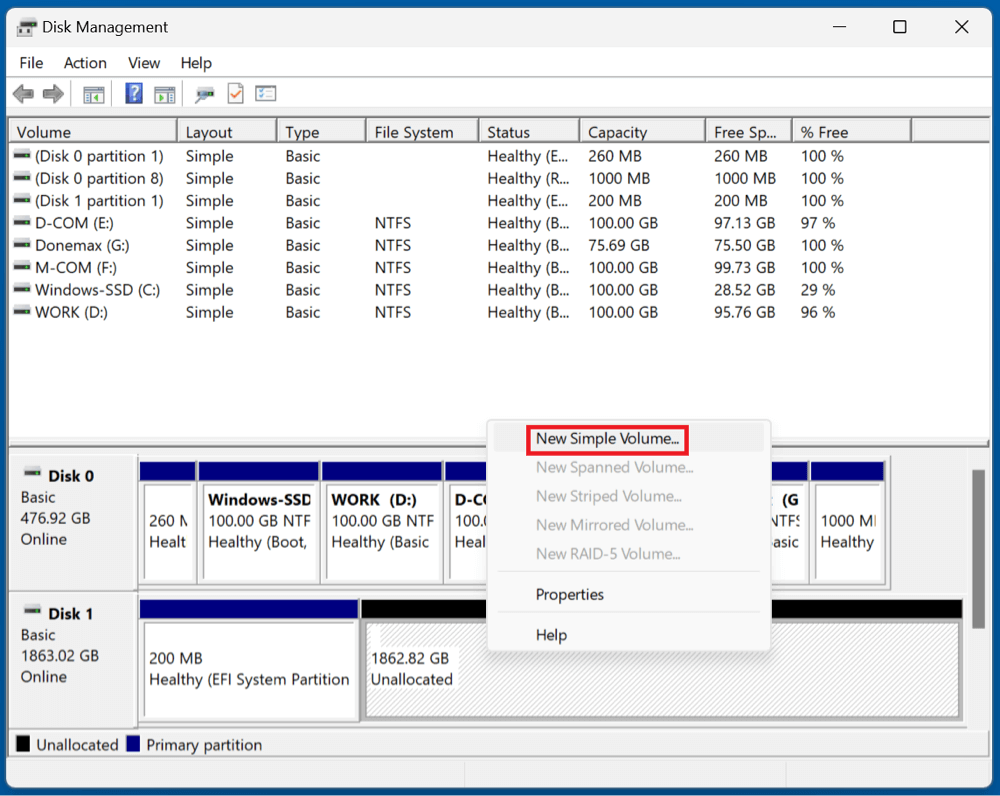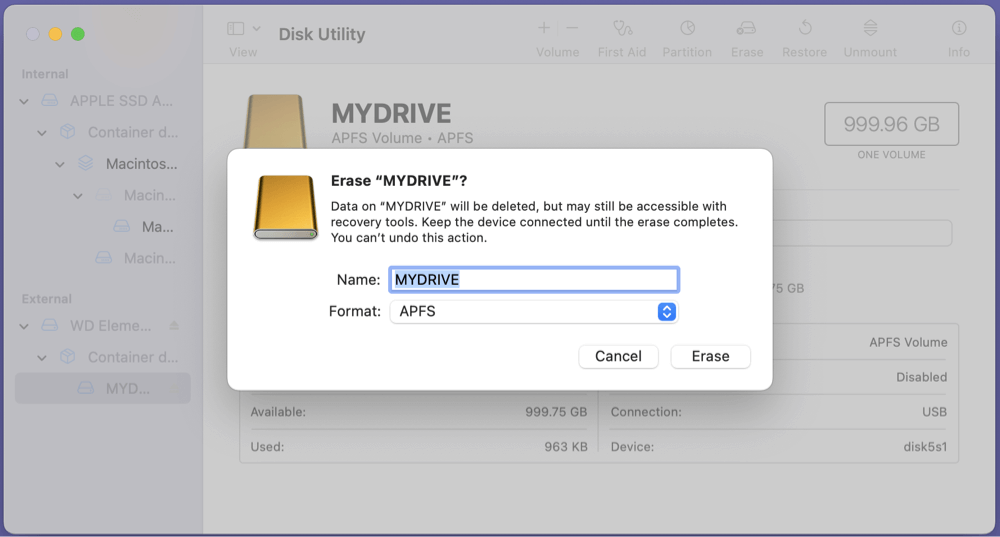Before we start: Partition corruption will cause severe data loss problems. If you have lost data due to partition damage or corruption, just use data recovery program - such as Donemax Data Recovery to scan the partition and get all lost data back. It offers disk manager tool to help you fix corrupted partition without reformatting.
PAGE CONTENT:
Partitions are an essential part of how your computer organizes data on hard drives and SSDs. They act like separate sections, helping manage files and optimize storage. But what happens when a partition becomes damaged or corrupted? This can lead to lost data, inaccessible files, and even system crashes. Fortunately, with the right knowledge and tools, you can recover lost data from damaged or corrupted partitions.
This article will guide you through understanding damaged partitions, recognizing symptoms, and applying practical recovery methods to restore your valuable data safely.
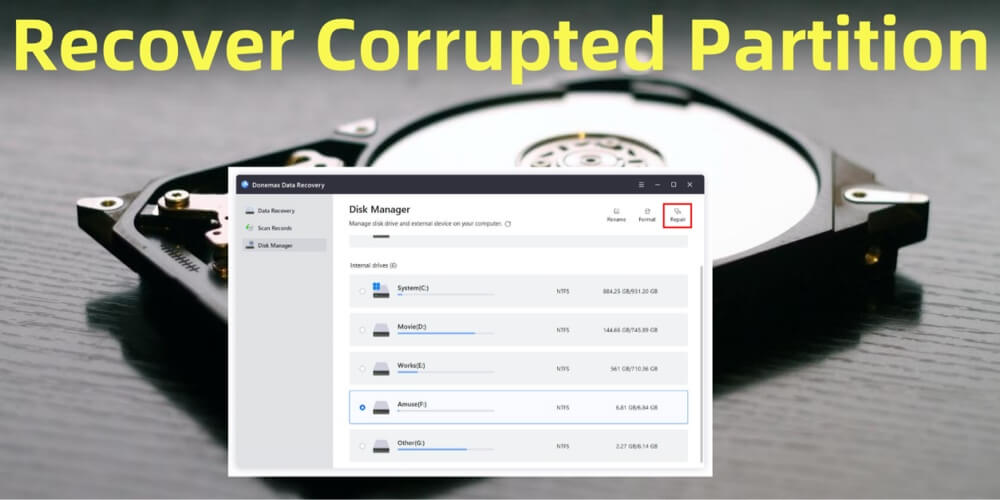
Understanding Partitions and Partition Corruption
A partition is a division of a physical storage drive into separate, manageable sections. Each partition can host its own file system (like NTFS, FAT32, or exFAT on Windows, or APFS and HFS+ on Mac) and behave like an independent drive.
Partition corruption occurs when the data structure or file system within a partition is damaged. This can prevent access to the data stored inside. Causes range from software errors and hardware failure to malicious attacks or improper handling of the drive.
Signs and Symptoms of a Damaged or Corrupted Partition:
Knowing the symptoms of partition damage helps diagnose the problem early. Here are common signs you might be dealing with a corrupted partition:
- Partition Not Showing Up: The partition might disappear from your file manager or disk management tool.
- Access Errors: When attempting to open the partition, you may receive errors like "Drive is inaccessible," "You need to format the disk before using it," or "The parameter is incorrect."
- File System Displays as RAW: Instead of showing NTFS, FAT32, or APFS, the file system might show as RAW, indicating corruption.
- Slow or Failed Read/Write: Files might take an unusually long time to open, or saving data might fail.
- Unexpected Disk Behavior: Your system might freeze, crash, or experience frequent errors related to the partition.
Recognizing these signs early is crucial for successful recovery.
Common Causes of Partition Damage or Corruption:
Understanding what causes partitions to get damaged can help prevent future problems:
- Sudden Power Failure: Abrupt shutdowns or power outages during file transfers or disk operations can corrupt partitions.
- Bad Sectors: Physical damage or degradation in hard drives can create bad sectors, which disrupt the file system.
- Improper Partitioning: Errors during resizing, formatting, or deleting partitions can cause corruption.
- Malware or Ransomware Attacks: Malicious software can corrupt or encrypt partitions, making data inaccessible.
- Improper Drive Ejection: Removing external drives without safely ejecting them can cause corruption.
- System Crashes: Operating system crashes during disk access can damage the partition structure.
Preliminary Steps Before Partition Recovery:
Before jumping into recovery, it's essential to take some precautionary steps:
1. Stop Using the Affected Partition Immediately
Continued use risks overwriting lost data. Avoid saving new files or installing software on the damaged partition.
2. Check for Physical Damage
Listen for unusual noises such as clicking or grinding, which might indicate hardware failure. Overheating drives also need attention.
3. Inspect the Partition Using Built-in Tools
- On Windows, open Disk Management (diskmgmt.msc) to see if the partition is recognized and its status.
- On Mac, use Disk Utility to check the drive and partition status.
4. Back Up Any Accessible Data
If you can still access some files, back them up immediately to a safe location on a different drive or external storage.
How to Recover Lost Data from a Damaged or Corrupted Partition?
Once you've completed preliminary checks, you can proceed with recovery methods. Recovery approaches can be grouped into two main categories: using built-in system tools and third-party data recovery software.
Recovering Using Built-In Tools
1. CHKDSK Command (Windows)
CHKDSK (Check Disk) is a powerful Windows utility that scans and repairs file system errors and bad sectors.
How to Run CHKDSK:
- Launch the Command Prompt in Administrator mode.
- Type the command:
chkdsk X: /f /r
- Replace X with the drive letter of the corrupted partition
![recover lost data from damaged or corrupted partitions]()
- Press Enter.
![recover lost data from damaged or corrupted partitions]()
What CHKDSK Does:
It attempts to fix logical errors and recover data from bad sectors but is limited to minor file system corruption.
Limitations:
CHKDSK might fail or worsen corruption if the partition is severely damaged or the disk has hardware faults.
2. Disk Utility First Aid (Mac)
Mac users can use Disk Utility's First Aid feature to check and repair disk permissions and file system errors.
How to Use First Aid:
- Open Disk Utility from Utilities via Applications.
![recover lost data from damaged or corrupted partitions]()
- Select the corrupted partition or disk.
- Click First Aid, then Run.
![recover lost data from damaged or corrupted partitions]()
What It Does:
First Aid repairs minor corruption in the file system structure.
Limitations:
It cannot recover lost files or repair serious corruption.
Using Third-Party Data Recovery Software
If built-in tools can't resolve the issue or if data recovery is your priority, third-party recovery software offers more advanced scanning and file restoration capabilities.
Steps for Using Recovery Software - such as Donemax Data Recovery:
Step 1. Download and Install the Software
Click Download button below to download the reliable data recovery software - Donemax Data Recovery on the computer.
Important: Install the software on a different partition to avoid overwriting lost data.
Step 2. Launch the Program and Select the Damaged Partition
Choose the affected partition from the list of available drives.
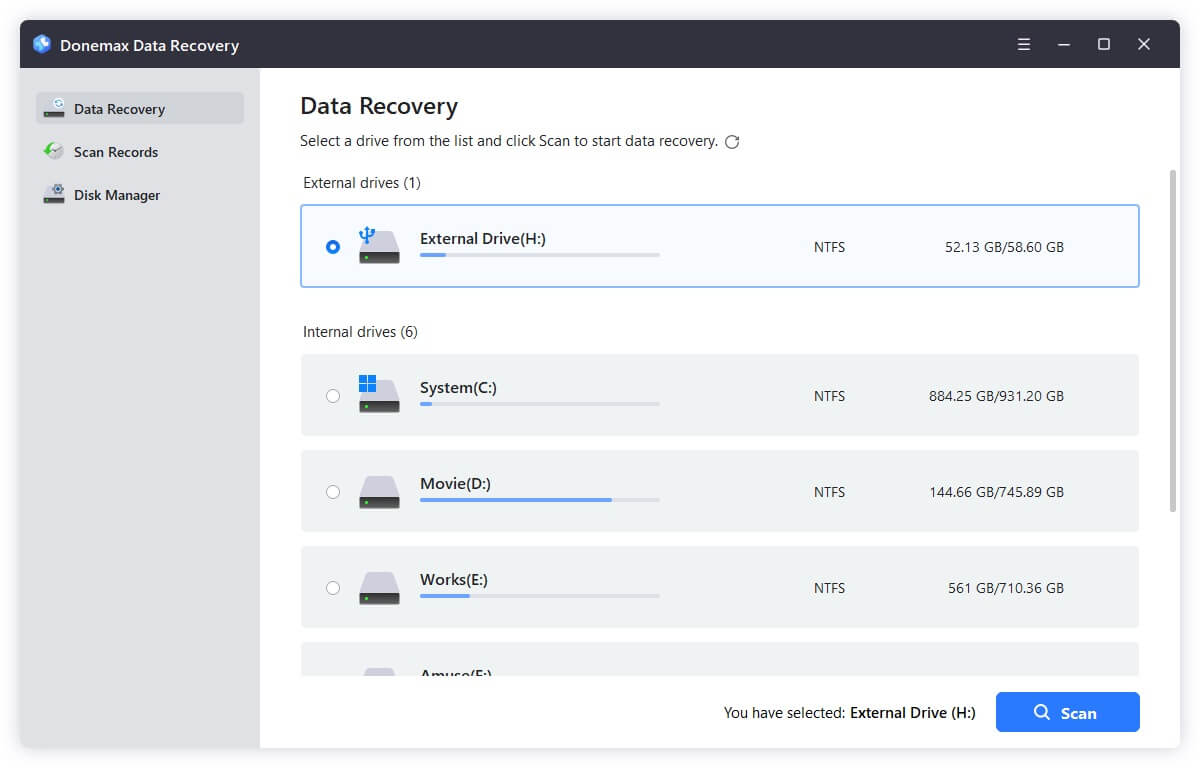
Step 3. Start the Scan
Click on Scan button It will deeply scan the corrupted or damaged partition to find all recoverable files including existing files and lost files.
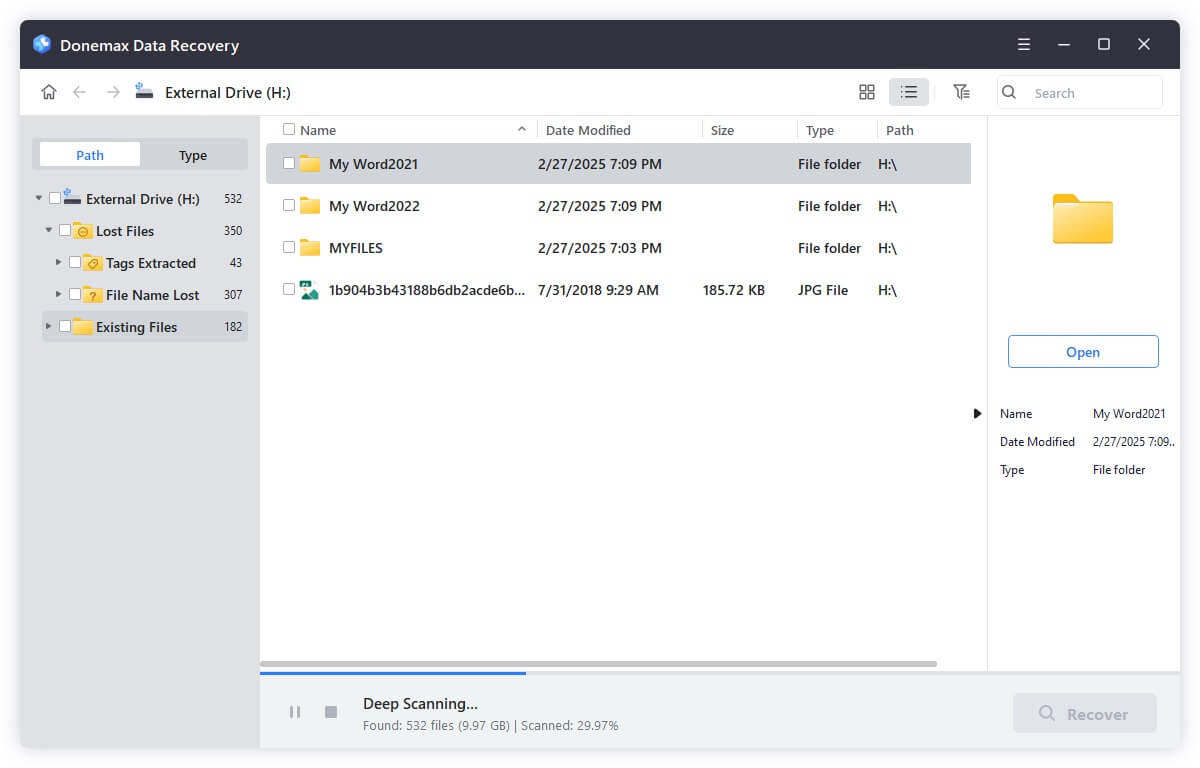
Step 4. Preview Found Files and Recover Wanted Files
After scanning, it allows you to preview recoverable files (documents, photos, videos). Select wanted files, click on Recover button. Save the restored files to an external disk or another partition.
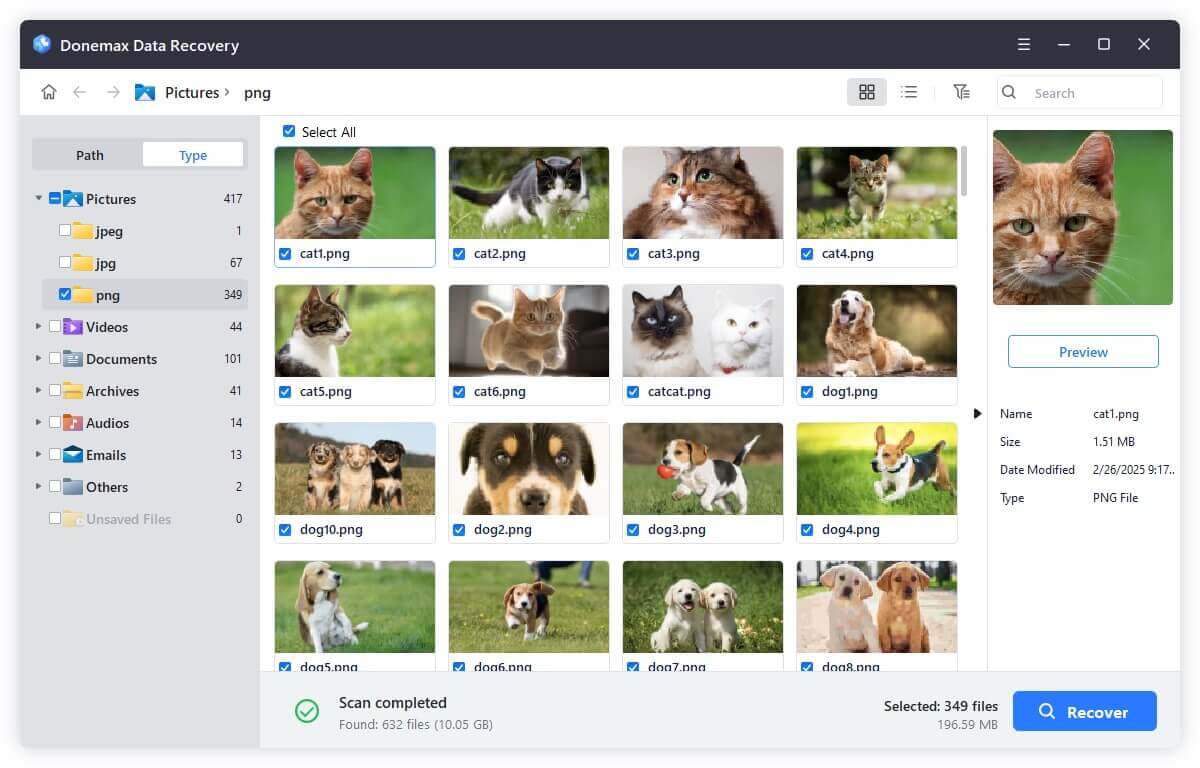
Tips for Successful Recovery with Software
- Act quickly: The likelihood of success increases with the timing of your rehabilitation effort.
- Avoid writing new data to the damaged partition.
- Use software (such as Donemax Data Recovery) with a good reputation and positive user reviews.
- If one tool fails, try another for a second opinion.
If recovery software fails or the drive shows signs of physical failure (clicking noises, overheating), it's best to consult professional data recovery services. They have specialized hardware and cleanroom environments to safely extract data.
Repairing or Rebuilding the Partition After Recovery
After successfully recovering your files, you may want to fix the partition itself to restore normal usage.
1. Delete and Recreate the Partition
Windows:
- Open Disk Management.
- Choose Delete Volume from the menu when you right-click the faulty partition.
![recover lost data from damaged or corrupted partitions]()
- To format and recreate the partition, right-click the unallocated area and select New Simple Volume.
![recover lost data from damaged or corrupted partitions]()
Mac:
- Use Disk Utility to erase and reformat the partition with the appropriate file system.
![recover lost data from damaged or corrupted partitions]()
2. Format the Partition
Formatting prepares the partition with a fresh file system structure (NTFS, FAT32, exFAT on Windows; APFS or HFS+ on Mac).
Note: Formatting erases all data, so only do this after recovery.
3. Use Partition Repair Tools
For complex corruption, tools like Donemax Data Recovery or TestDisk (open-source) can repair partition tables and file system structures without data loss.
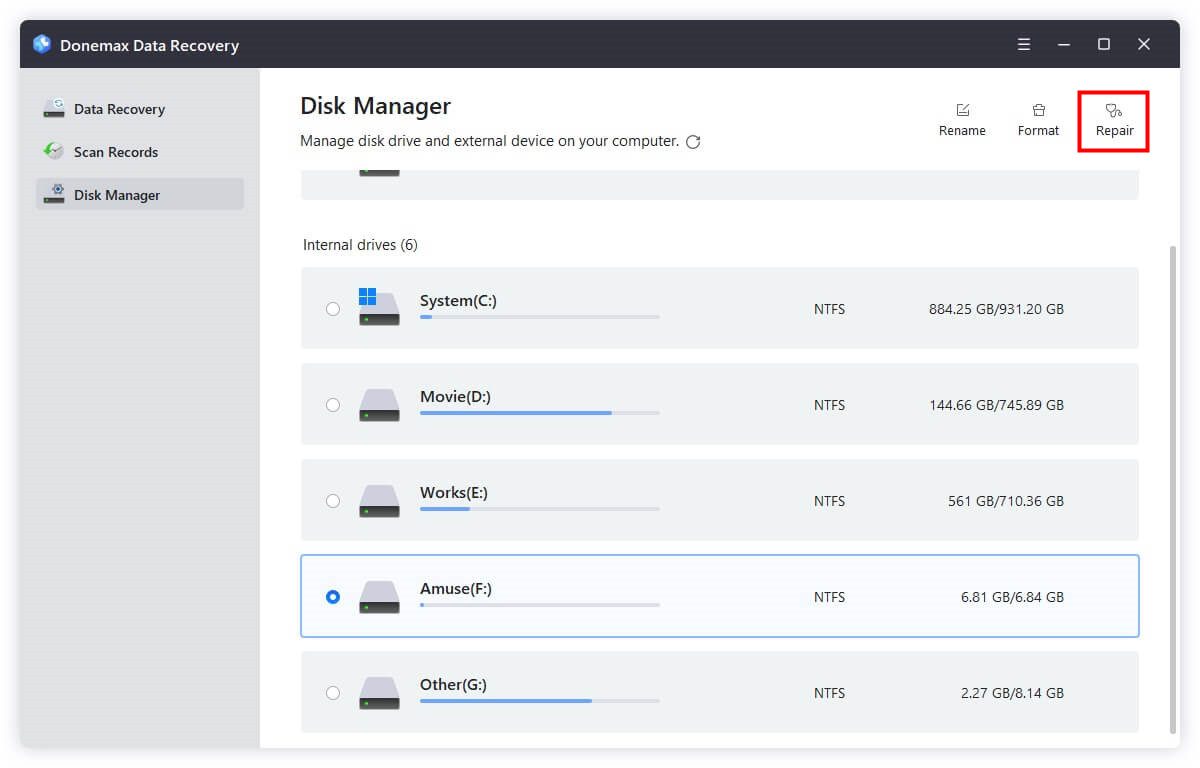
Preventive Measures to Avoid Future Partition Corruption
Prevention is always better than cure. Protect your data and partitions with these tips:
- Regular Backups: To maintain backups of crucial files, use NAS, external hard drives, or cloud storage.
- Use a UPS: Prevent sudden shutdowns with an uninterruptible power supply.
- Run Antivirus Scans: Protect your system against malware that can corrupt partitions.
- Safely Eject Drives: Always use "Safely Remove Hardware" before unplugging external drives.
- Monitor Disk Health: Use tools like CrystalDiskInfo (Windows) or DriveDx (Mac) to check for bad sectors and disk health.
Conclusion
Recovering lost data from a damaged or corrupted partition might seem daunting, but with systematic steps, it's achievable. Here's a quick recap:
- Recognize the symptoms and stop using the partition immediately.
- Try built-in tools like CHKDSK or Disk Utility's First Aid.
- Use reliable data recovery software for advanced scanning and restoration.
- Repair or reformat the partition only after ensuring your data is safely recovered.
- Implement preventive measures to safeguard your partitions and data from future damage.
Remember, timely action and proper tools increase your chances of successful recovery significantly. Always keep backups and be vigilant with your drive's health to avoid data loss in the first place.


Donemax Data Recovery
One of the best data recovery programs to recover deleted, formatted or lost data from PC, Mac, HDD, SSD, USB drive, SD card, camera, RAID, Sever or other storage devices.
Related Articles
- May 27, 2025How to Recover Deleted or Lost AVI Videos?
- May 29, 2025Best 4 Methods to Recover Deleted CDR File
- Apr 07, 2025Floppy Disk Recovery: A Comprehensive Guide
- Jun 06, 2025How to Recover Deleted VOB Videos?
- May 29, 2025How to Fix I/O Device Error: A Complete Guide
- Jun 20, 2025How to Recover Deleted ODT File (OpenDocument Text File)? [5 Methods]

Maria
Maria is one of the senior writers & editors of Donemax who lives and works in Sydney, Australia. She loves PC, Mac and Internet Technology. She has 6 years of writing articles about data recovery on PC/Mac, disk cloning solution, data eraser and computer OS optimization, etc. She is also interested in testing various software and digital products.

Gerhard Chou
In order to effectively solve the problems for our customers, every article and troubleshooting solution published on our website has been strictly tested and practiced. Our editors love researching and using computers and testing software, and are willing to help computer users with their problems


